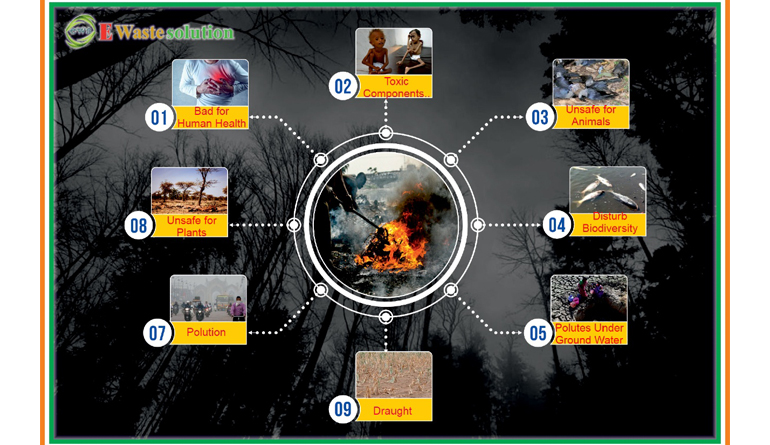Have Waste/Pickup?


Have Waste/Pickup?

Harmful Effects Caused by Improper Computer & Electronic Waste Recycling. Electronic waste affects nearly every system in the human body because they contain a plethora of toxic components including Mercury, Lead,
We make a lot of e-waste. When electronics end up in landfills, toxins like lead, mercury, and cadmium leach into the soil and water.
The electronic waste problem is huge: More than 2.2 million tons of e-waste is produced every year. Which is enforcing India in danger; easily we should get a clear scenario in aspect of the world. To prevent of E-waste’s harmful effects India has its own specified E-Waste Treatment law.
India’s Ministry of Environment and Forest (MoEF) is to place legal liability for reducing and recycling electronic waste with producers for the first time under the E-waste (Management and Handling) Rules 2011. The rules, which form part of the Environment Protection Act, will come into effect from 1st May 2012.
The equipment in e-waste is made of both hazardous and non-hazardous substances. Hazardous substances it has various toxic and hazardous substances like heavy metals, lead, mercury, cadmium, and persistent organic compounds BFRs, phthalates, etc. In their components which are
cause of concern as they release while processing, recycling or disposal in uncontrolled conditions and pose risk to human health [UNEP 2005].
The presence of heavy metals in e-waste made it indifferent to the municipal biodegradable waste as they not only hamper the bio-degradation process but harm human health and the environment also. People engaged in the the-waste treatment process are directly exposed to these metals while doing
recycling, and recovery processes and are most affected. However, beyond the threshold value, these are toxic and hazardous, for example, dibutyl phthalate anddiethylhexy1 phthalate is considered “Toxic for Reproduction” at concentrations >=0.5%.[CPCB Guidelines 2008.].
For example, Capacitors containing polychlorinated biphenyls (PCBs), Mercury-containing components such as switches or backlighting lamps, Batteries, PC-boards of mobile phones, and other devices if the surface area of the circuit board is greater than 10 cm2. The percentage of heavy metals depends upon the manufacturing requirements of the equipment.
The components connected in this circuitry arrangement are switches, resistors, and capacitors. The connecting media is soldering having tin and lead in the ratio of 60/40
Relay and switches often contain mercury but also contain a small amount of cadmium for plated
contacts. The following list will show the hazardous components with the respective hazardous compounds used and applications of the equipment.